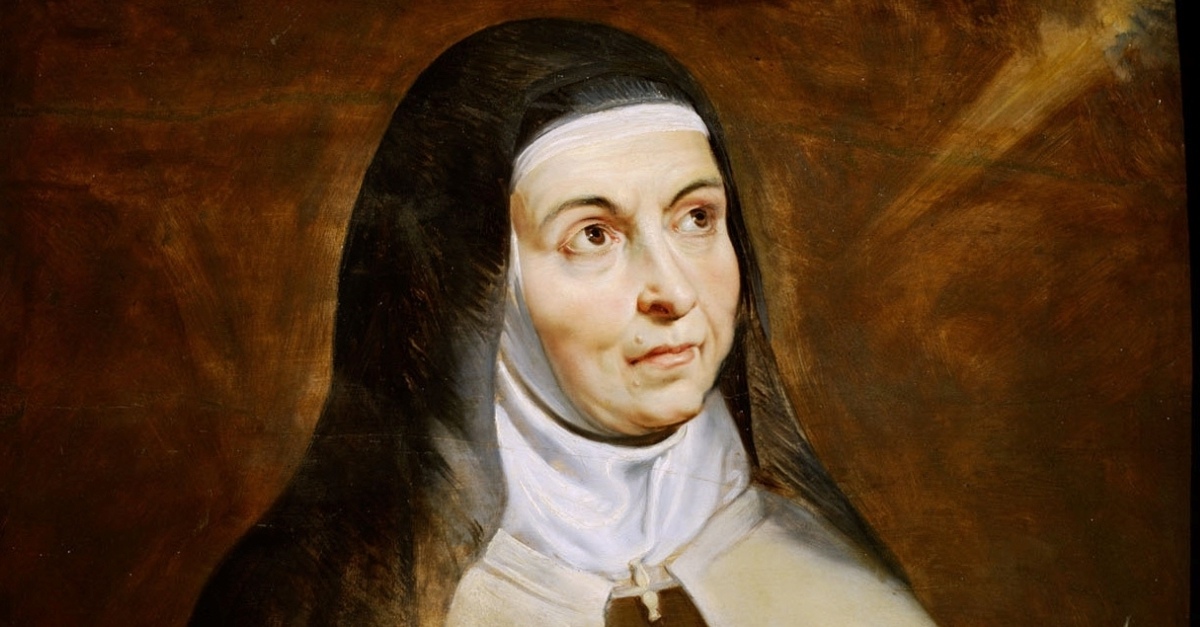
Who was St. Teresa of Avila? Born in 1515, St. Teresa of Avila was a Spanish mystic, writer, and reformer of the Carmelite Order. Known for her deep spirituality and profound writings, she became one of the most influential figures in Catholic history. Why is she important? Her works, like "The Interior Castle" and "The Way of Perfection," offer timeless insights into prayer and the soul's journey toward God. Did you know? Teresa was the first woman to be named a Doctor of the Church, a title given to saints recognized for their significant contributions to theology. Curious to learn more? Let's dive into 17 amazing facts about this remarkable woman who continues to inspire millions.
Early Life of St. Teresa of Avila
St. Teresa of Avila, born Teresa Sánchez de Cepeda y Ahumada, was a Spanish noblewoman who became a prominent mystic, reformer, and writer. Her early life set the stage for her future spiritual journey.
- Teresa was born on March 28, 1515, in Gotarrendura, a small village in Spain.
- Her father, Alonso Sánchez de Cepeda, was a wealthy wool merchant, and her mother, Beatriz de Ahumada y Cuevas, was a pious woman who influenced Teresa's religious upbringing.
- Teresa was one of ten children, and her family was known for its deep Catholic faith.
- At the age of seven, Teresa and her brother Rodrigo attempted to run away to Africa to become martyrs but were caught by an uncle and brought back home.
Spiritual Awakening and Religious Life
Teresa's spiritual awakening began in her teenage years, leading her to join a convent and eventually become a Carmelite nun. Her journey was filled with challenges and profound experiences.
- At 20, Teresa entered the Carmelite Convent of the Incarnation in Ávila, despite her father's initial opposition.
- She experienced a severe illness shortly after joining the convent, which led to a near-death experience and deepened her spiritual resolve.
- Teresa began experiencing mystical visions and ecstasies, which she initially doubted but later embraced as divine encounters.
- Her spiritual writings, including "The Interior Castle" and "The Way of Perfection," are considered masterpieces of Christian mysticism.
Reformation of the Carmelite Order
Teresa's most significant contribution was the reform of the Carmelite Order, which aimed to return to a simpler, more austere way of life. Her efforts faced resistance but ultimately succeeded.
- In 1562, Teresa founded the Convent of St. Joseph in Ávila, the first of many reformed Carmelite convents.
- She emphasized poverty, humility, and strict enclosure for the nuns, which contrasted with the more relaxed practices of the time.
- Teresa faced opposition from both within and outside the Carmelite Order, including from church authorities and local communities.
- Despite the challenges, she founded 17 convents and helped establish the Discalced Carmelites, a reformed branch of the order.
Legacy and Canonization
St. Teresa's legacy extends beyond her lifetime, influencing countless individuals and earning her recognition as a saint and Doctor of the Church.
- Teresa was canonized by Pope Gregory XV in 1622, just 40 years after her death.
- In 1970, Pope Paul VI declared her a Doctor of the Church, making her the first woman to receive this title.
- Her feast day is celebrated on October 15, and she is the patron saint of headache sufferers, Spanish Catholic writers, and religious reformers.
- Teresa's writings continue to inspire spiritual seekers and scholars, with her works translated into numerous languages.
- Her life and teachings have been the subject of many books, films, and artistic works, cementing her place as one of the most influential figures in Christian history.
Final Glimpse at St. Teresa of Avila
St. Teresa of Avila's life was packed with remarkable achievements and spiritual insights. From founding the Discalced Carmelites to her profound writings, she left a lasting legacy. Her mystical experiences and dedication to reform made her a pivotal figure in the Catholic Church. Teresa's resilience in the face of adversity and her unwavering faith continue to inspire many. Her feast day on October 15th is a reminder of her contributions. Whether you're drawn to her spiritual teachings or her historical impact, St. Teresa's story is a testament to the power of faith and determination. Dive into her writings, explore her life, and let her journey inspire your own. Her legacy is not just for scholars but for anyone seeking spiritual growth and inner peace.
Was this page helpful?
Our commitment to delivering trustworthy and engaging content is at the heart of what we do. Each fact on our site is contributed by real users like you, bringing a wealth of diverse insights and information. To ensure the highest standards of accuracy and reliability, our dedicated editors meticulously review each submission. This process guarantees that the facts we share are not only fascinating but also credible. Trust in our commitment to quality and authenticity as you explore and learn with us.


